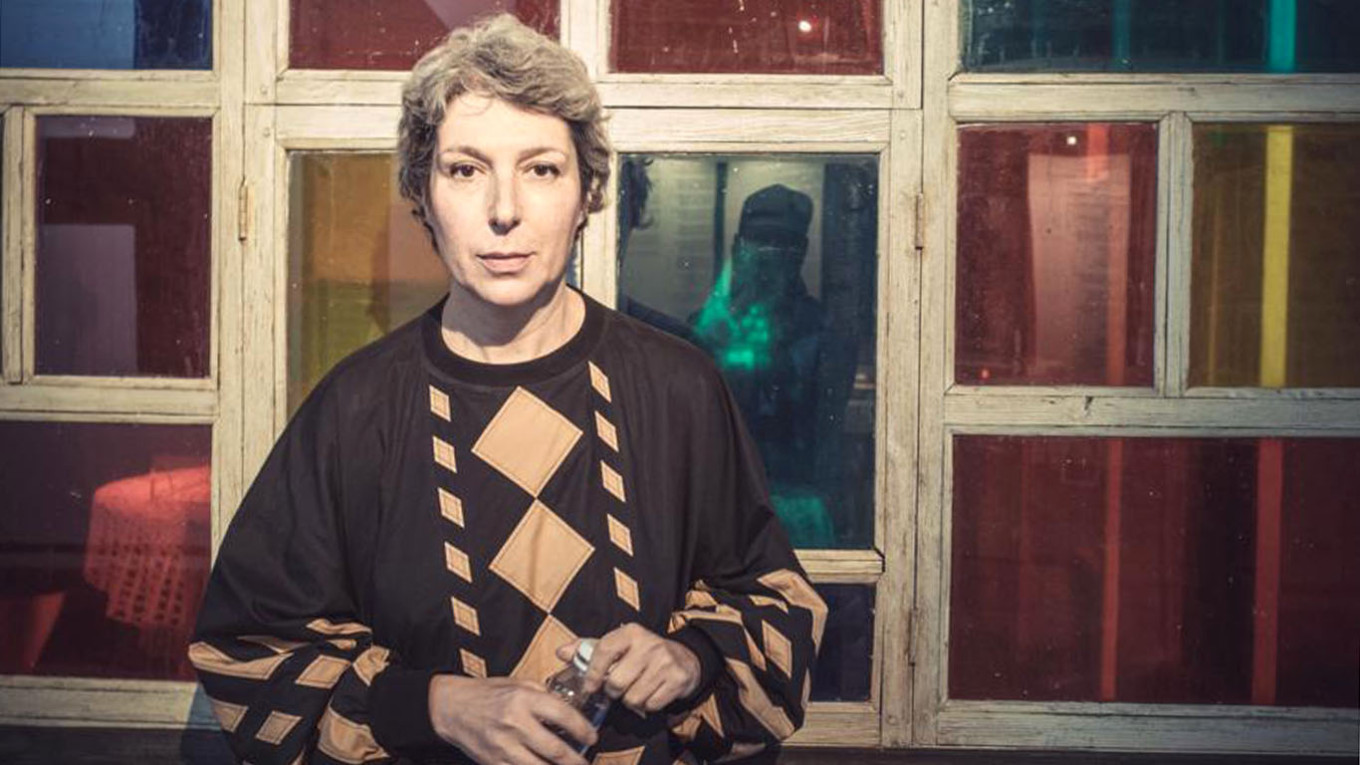Anna Narinskaya has taken on various roles over the course of her professional journey, including curator, journalist, documentary filmmaker, playwright, and activist.
Her exhibition, “Boxed,” which debuted in Berlin in May and is intended for touring, utilizes multimedia to highlight issues impacting the LGBTQ+ community in Russia.
Featuring seven installations, all housed within black boxes, “Boxed” addresses themes of imprisonment, torture, discrimination against transgender individuals, censorship, denunciation, the Russian ban on the “international LGBT movement,” and the comparatively liberal atmosphere of the 1990s.
Created in partnership with EQUAL PostOstand and NC SOS, “Boxed” is set to be showcased as part of “Artists Against the Kremlin,” an art exhibition co-organized by The Moscow Times in Amsterdam from August 15 to September 4.
The Moscow Times interviewed Narinskaya about the messages she aims to communicate through her exhibition, what insights audiences in Europe and the West might gain, and her experiences in exile.
This interview has been condensed for brevity and clarity.
The Moscow Times: Can you provide some insights into the “Boxed” exhibition?
AN: This exhibition serves as a sequel to “No Such People Here,” the inaugural exhibition focusing on LGBTQ+ individuals in Russia. That event was entirely documentary-based, featuring items that people salvaged while fleeing from Chechnya. It created significant awareness, which I am proud of, but the primary goals were to inform the audience about the situation and to raise funds.
“Boxed” consists of immersive installations. We used people’s experiences to explore profoundly disturbing themes, attempting to balance the experience between a theme park and the grim reality we’re addressing. Achieving that balance was quite challenging for me.
The narratives we present are deeply tragic, detailing the experiences of LGBTQ+ individuals in Russian prisons, the legal discrimination they face, and the overall persecution during demonstrations. The documentary installations draw from generalizations and firsthand reports from gay individuals in Russia, collected with the help of local stringers.
MT: Do you see “Boxed” as an evolution from the first exhibition? Are they interconnected, or are they merely linked by their focus on LGBTQ+ themes?
AN: They have a connection, though it’s nuanced. For instance, one of the installations in “Boxed” also appeared in “No Such People Here” and focuses on torture. We photograph everyday objects, like a plastic bag or a meat tenderizer, which transform into tools of torture in Chechnya. This reality can extend to any totalitarian society. One exhibit even features a pillow, tied to a tragic case of a young girl killed by her parents upon discovering her sexual orientation.
At first, the photographs may seem styled and attractive, resembling advertisements. But once you engage with the underlying narratives, it becomes clear that these objects represent instruments of torture and, in some cases, murder.
MT: What reactions have you received in Germany?
AN: There have been two predominant types of responses. The first reflects a sense of resignation: ‘We expect nothing less from Russia.’ They view it as a grim, gray landscape.
The second group is more enlightening; they express surprise at the details we present. Some were shocked, impressed by the facts — though a few questioned, “Are you sure you’re not exaggerating?”
One installation that particularly resonated involved Russia’s extremist categorization of the “international LGBT movement.” We projected the court’s ruling on a wall, reminiscent of the opening of a Star Wars movie, and used AI for the judge’s voice. It’s a simple concept, yet audience members often stood in disbelief, finding the situation utterly absurd.
We also exhibit a piece focused on transgender rights. Recently, there have been instances in Russia where transgender individuals have had their passports reverted to their original gender. We interviewed several transgender people who have migrated and found that many are unhappy in their new locations.
Some have faced arrest in Russia for attempting to use credit cards reflecting a different gender identity. It’s a form of unique harassment. [The cashier] is aware of the situation but often calls the police, perceiving the card as suspicious.
One particularly heart-wrenching story involved a man who transitioned and adopted a child, only for authorities to remove the child from his care due to his gender identity. The child was in need of medical care, but officials believed it better for them to be placed in an orphanage rather than stay with a transitioning parent.
MT: Can audiences in the West draw parallels relevant to their own countries from your exhibition?
AN: I believe many in the West may incorrectly feel assured that such situations couldn’t occur in their own countries. Ironically, just 15 years ago in Russia, we were convinced that similar fates were impossible here. One of our installations reflects on the 1990s in Russia, a time when LGBTQ+ culture thrived and was visible across media and nightlife.
I sometimes think that people here lack critical awareness. They often perceive atrocities as happening to “others.” Some might grasp the potential for such a scenario to unfold in their own lives, but unfortunately, few seem to project that realization onto their circumstances.
MT: Why did you venture into curation?
AN: A decade ago, I encountered blatant censorship in Russia, but the art world offered a somewhat safer space for expression. Several Russian oligarchs were heavily invested in the arts and provided sponsorship. While I might feel a tinge of embarrassment for having worked with their resources, I rarely relied on state funding.
Looking back, one might argue that the lines between oligarch funding and state money aren’t significantly different. Some of our exhibitions took place in state museums, so there was some state involvement. Was it worth it? Absolutely — I maintained my integrity throughout.
MT: In what ways has your role evolved now that you are in exile?
AN: I feel my journey is essentially over. Thankfully, being older gives me a unique perspective. I see younger individuals reinventing themselves and pioneering innovative efforts, but I doubt I’ll ever reach the significance or influence I once had.
My expertise lies in Russian history and culture, which isn’t as sought after as it once was. That said, I still find fulfillment through exhibitions and plays. I’m not complaining, but anti-Putin Russians currently face a particularly challenging landscape. They’re dismissed in Russia and don’t wholly fit in here either. You can view it as part of our collective responsibility, yet coming to terms with that is a personal journey.
MT: How has your connection to Russia transformed?
AN: This marks the second time I’ve experienced a loss of my homeland. I was born in the Soviet Union, which dissolved shortly after I graduated from university. Being an adult at that time, I experienced no nostalgia; in fact, I believed there was nothing redeemable about the Soviet era.
For me, Russia is two countries: one under Putin’s regime and the other characterized by a vibrant intellectual community that thrived despite oppression. Somehow, being marginalized drew us together; those who opposed the government formed a close-knit circle and exchanged ideas. I miss that camaraderie, but I’m not seeking to relive it. It was part of my past, and perhaps one day, I’ll pen my memoirs.
“Boxed” will feature in the second edition of “Artists Against the Kremlin,” an art exhibition organized by The Moscow Times and All Rights Reversed gallery at De Balie in Amsterdam from August 15 to September 4.
For further details, visit the exhibition website.

